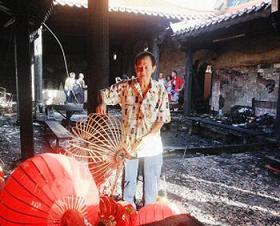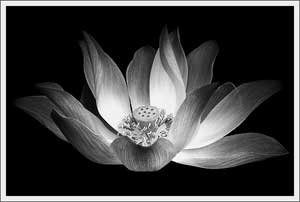13th Sakyadhita International Conference on Buddhist Women calls for papers
13th Sakyadhita International Conference on Buddhist Women calls for papers |
- 13th Sakyadhita International Conference on Buddhist Women calls for papers
- Centuries-old temple fully restored
- Not all Rolls Royce-driving tulkus…
- Buddhist group offers path to inner peace at historic Azusa mansion
- Jikoen Buddhist Women’s Association donates substantial sum for Pacific Buddhist Academy’s capital campaign
- The Real "Dark Age"
| 13th Sakyadhita International Conference on Buddhist Women calls for papers Posted: 30 Jan 2012 06:00 AM PST
Alan Watts - Ecstasy This posting includes an audio/video/photo media file: Download Now |
| Centuries-old temple fully restored Posted: 29 Jan 2012 04:00 PM PST By FARIK ZOLKEPLI, The Star, January 29, 2012KUALA TERENGGANU, Malaysia -- Two years after it was damaged in a fire, the more-than-200-year-old Ho Ann Kiong temple in Kampung Cina has been restored to its former splendour.
The temple, built in 1801 and considered a major historical and tourism site, suffered major damage when fire swept through it in February 2010. The RM1.3mil restoration work on the Buddhist temple was carried out with public funds. "We never found out the cause of the fire. We just wanted to restore it to its former beauty," temple committee chairman Datuk Wee Cheng Huat told The Star yesterday. "The temple is an important landmark for the Chinese, with thousands visiting it each year to offer prayers," he said. "We are happy it can finally be used again," said Wee, thanking well-wishers and contributors who had pitched in for the restoration effort. The temple, built by the early Hokkien community and situated in the city's Chinatown tourist belt, is the oldest structure in the area. |
| Not all Rolls Royce-driving tulkus… Posted: 29 Jan 2012 03:00 PM PST An interesting piece by Dzongsar Jamyang Khyentse Rinpoche, better known to some as a film director and writer than as a lama, appeared on The Buddhist Channel today. He wrote: We must aspire to galvanize myriad manifestations of the Buddha, not just throne-hopping, Rolls Royce-driving tulkus who are a product of nepotism." ~Dzongsar Jamyang Khyentse [...] Tổ Sư Đạt Ma - Tập 2/2 This posting includes an audio/video/photo media file: Download Now |
| Buddhist group offers path to inner peace at historic Azusa mansion Posted: 29 Jan 2012 02:00 PM PST by J.D. Velasco, San Gabriel Valley Tribune, Jan 28, 2012AZUSA, CA (USA) -- Smack dab in the middle of the Rosedale housing project is a mansion with a colorful history and surprising modern-day use.
The MacNeil House, as it is known, was built in 1932 by Louise Slauson MacNeil - the daughter of influential land developer and Azusa founder Jonathan Sayre Slauson. MacNeil's sister, Kate Vosburg, lived next door in a house now used as the headquarters of the Monrovia Nursery. Though they were neighbors, the sisters notoriously did not get along, according to Jeffrey Cornejo, president of the Azusa Historical Society and Chairman of the city's Historical and Cultural Landmark Commission.
Palm Drive, which leads up to the homes, is divided by a median because it originally existed as two parallel driveways - one for each sister - so they would never have to run into each other. With such turmoil and discord woven into its history, it is perhaps appropriate that the home is now occupied by a religious group dedicated to helping mankind find inner peace. Since the mid-90s, the home and its grounds have been owned and used as a meditation center by the Dhammakaya Movement - a Buddhist group based in Thailand that puts a special emphasis on the importance of Sophon Ruennakarn, a spokesman for the center, said the movement established its first California location in Cerritos in 1992. As its congregation grew, the center relocated to a larger facility in Maywood. Later, they rented out a building behind the MacNeil house. Finding that the property had everything they needed - several small cabins, a dining hall, and a chapel, all of which were built when the property was used as a Jesuit retreat - the group purchased the home from the Monrovia Nursery. "When we came here, we didn't need to build anything," Ruennakarn said. "We could use it as it is." Though the property doesn't look like the typical Buddhist facility, because it suited their needs so well, much of the property remains as it was before the group moved in. They have made some changes, the most obvious being the installation of an enormous golden-colored Buddha statue overlooking the front drive. Ruennakarn said the statue is identical to the one located in the group's headquarter temple in Thailand. They have also planted a rose garden near what used to be the home's swimming pool and maintain "hidden gardens" on a hillside in front of the home. The gardens, a collection of trees and shrubs, are accessed by way of winding pathways. Along the paths are benches that visitors are encouraged to rest on while they meditate. Eight monks live at the center, with three to five of them serving on long-term duty there. On Sunday, the center will offer a one-day meditation retreat from 9 a.m. to 3 p.m. The event will include yoga, meditation lessons, relaxation exercises, lunch and a group picture. The class is free, but a $ 20 donation is suggested. Sunday school for children ages 6 to 13 is also offered, as well as classes on the Thai language. The facility, 865 E. Monrovia Place, is open to visitors daily from 9:30 a.m. to 5 p.m. For more information on rules for visiting, which include conservative dress and no smoking or pets, visit www.dimc.net or call 626-334-8045. Read More @ Source♫✿ Zen Garden ♫✿ This posting includes an audio/video/photo media file: Download Now |
| Posted: 29 Jan 2012 01:00 PM PST by Gavin Takeno, Karma Chronicle, January 27, 2012Honolulu, Hawaii (USA) -- Last Friday, the Pacific Buddhist Academy (PBA) received a $ 1000 donation from the Buddhist Women Association of the Jikoen Hongwanji for the new and highly anticipated school building.
A proposed design for one of PBA's new classroom buildings. - permission of the PBA Administration.
Head of School Pieper Toyama feels humbled, honored, and appreciative that these women would work this hard to raise money and then simply give their money to us. "They don't know any of the faculty, nor do they know the students, but yet they came right out and gave PBA money," Toyama said. "These hard-working women just gave us money." Toyama believes the women committed themselves to the school's future. "They have made an investment to see that everyone grows up to become a great person," he said. "Knowing that, I believe it is every one's responsibility to not let that investment go to waste!" Mr. Toyama and the underclassmen are very excited and anxious for the new building. The new building will be right on the temple campus. Toyama is most excited for the multi-purpose room. The room will serve as a study room, annex, exercise room, or whatever students envision. One side of the wall will have doors that can fold up and reveal the onaijin. The doors have the image of the dharma wheel and a dragon, the school's mascot. The onajin will be even more unique for the writing on the doors. As Toyama explained, the last few words in the Buddhist hymn "Ti-Sirana" -- " Buddham saranam gaccami / Dhammam saranam gaccami / Sangham saranam gaccami" -- will signify that the services conducted with the onaijin will serve all types of Buddhists. "Buddha, dharma and sangha are the three treasures of all Buddhists," said Toyama. "It doesn't matter if they are Mahayana, Theravada, or Vajrayana." The school is in the last phase of a capital campaign to raise five million dollars. Toyama wants construction for the building to be finished in the summer of 2013. To date, the school has raised 3.5 million dollars. "We only need half a million more," Toyama said. "I want a foundation to donate the last million dollars for our cause." Read More @ Source |
| Posted: 29 Jan 2012 12:00 PM PST by Dzongsar Jamyang Khyentse Rinpoche, The Buddhist Channel, Jan 30, 2012Himachal Pradesh, India -- Some say the dark age, age of vice - Kaliyuga (last of the four stages the world goes through as part of the cycle of yugas described in the Indian scriptures), is here now, or at least coming soon. Some even fear that at the end of 2012 the world as we know it will end.
Likewise, Cherub's flying, a sound economy, freedom of information, peaceful times are also not necessarily signs of a golden age. The age of light is said to be when people value empathy and forgiveness, when they have a willingness to see other people's view, and are contented with what they have. When such values are systematically sabotaged, then you can say that the dawn of the doomsday has begun. When we look at a harmless beggar as a pest and envy billionaires who routinely destroy the earth, we are inviting doomsday to come.
Destiny is conditioned. Chief among the causes and conditions is one's own individual self. You can create your destiny. Your choices are your destiny. What and how we are now depends on what and how we have been in the past. What and how we will be in the future depends on what and how we are now. Shakyamuni with his lotus feet may approach your doorstep for alms but if we keep on being obsessed with Patek Philipe watches, fame or friends, or six pack abs, then Buddha's truth is an annoyance, an inconvenient truth. Even though we may be in midst of "Kaliyuga" and are subject to endless causes and conditions of the dark age - easily distracted and confined to thinking of our own self preservation, aspiring to reach benchmarks based on materialistic, consumerist values - we can take advantage of it. It is said that during the degenerate times, the compassion of the Buddhas and bodhisattvas ever more stronger. A savvy spiritual person could take advantage of that opportunity. The dark age can be a reminder of the urgency and preciousness of the Buddha, Dharma, and Sangha. As beings that are dependant on conditions, we need to search for light, and cultivate the conditions that brings light. We need constant reminding of the opposite of materialism. For that we need the image of the Buddha, the sound of the Dharma, and the structure of the Sangha. In the past few years, we have lost some of the greatest appearances of the Buddha, such as Kyabje Trulshik Rinpoche, and Mindroling Trichen Rinpoche and Penor Rinpoche, who were all great reminders. But even though their appearance have dissolved, bear in mind that their compassion does not know the meaning of limitations. In the spirit of where there is a demand, there is supply, we should have aspirations and longing for the appearance of the Buddhas and Bodhisattvas to never to cease, and- to put it in a trendy term - their swift rebirth. But this rebirth should not be limited to a Tibetan child who has been raised in a particular culture or tradition. We can wish for Buddha's rebith in all forms, even as something seemingly insignificant as the breeze, to remind us of the values of love and compassion and tolerance. We must aspire to galvanize myriad manifestations of the Buddha, not just throne-hopping, Rolls Royce-driving tulkus who are a product of nepotism. ------ Ashtanga YOGA music - MASALA This posting includes an audio/video/photo media file: Download Now |
| You are subscribed to email updates from BuddhaRocks ☸ Buddhist To stop receiving these emails, you may unsubscribe now. | Email delivery powered by Google |
| Google Inc., 20 West Kinzie, Chicago IL USA 60610 | |

 The
The  << Former temple caretaker Tan Eng Hock cleaning up the temple grounds after the fire.
<< Former temple caretaker Tan Eng Hock cleaning up the temple grounds after the fire. << From left, Phra Air Thaniyo, Venerable Phra Kruvites Ponyapone, VIce Abbott Phra Vichak Suddhiraro, and Phra Pepper Thanajaro stand before a Buddha statue at Dhammakaya International Meditation Center in Azusa on Friday, Jan. 20, 2012. The center offers meditation, yoga, and Thai language classes as well worship services. (Watchara Phomicinda/Staff Photographer)
<< From left, Phra Air Thaniyo, Venerable Phra Kruvites Ponyapone, VIce Abbott Phra Vichak Suddhiraro, and Phra Pepper Thanajaro stand before a Buddha statue at Dhammakaya International Meditation Center in Azusa on Friday, Jan. 20, 2012. The center offers meditation, yoga, and Thai language classes as well worship services. (Watchara Phomicinda/Staff Photographer)
 What determines if an age is dark or golden? What are the symptoms or omens? Earthquakes, violet skies, meteoric activity, these are not the omens of doomsday as we are made to believe.
What determines if an age is dark or golden? What are the symptoms or omens? Earthquakes, violet skies, meteoric activity, these are not the omens of doomsday as we are made to believe.  Dzongsar Jamyang Khyentse Rinpoche, also known as Khyentse Norbu, is a Bhutanese lama, filmmaker, and writer. His two major films are The Cup (1999) and Travellers and Magicians (2003). He is the author of the book What Makes You Not a Buddhist (Shambhala, 2007). He is also a prominent tulku associated with Dzongsar Monastery in Derge, Eastern Tibet.
Dzongsar Jamyang Khyentse Rinpoche, also known as Khyentse Norbu, is a Bhutanese lama, filmmaker, and writer. His two major films are The Cup (1999) and Travellers and Magicians (2003). He is the author of the book What Makes You Not a Buddhist (Shambhala, 2007). He is also a prominent tulku associated with Dzongsar Monastery in Derge, Eastern Tibet.